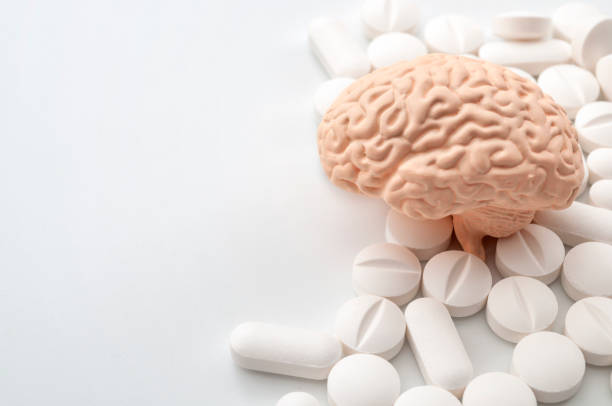Effective ADHD Treatment: A Comprehensive Guide to Symptom Management
Attention Deficit Hyperactivity Disorder (ADHD) affects countless individuals, and exploring effective ADHD treatment options can lead to significant improvements in daily functioning and overall well-being. From medication choices that include stimulants and non-stimulants to therapeutic approaches like Cognitive Behavioral Therapy, various strategies are available to tailor treatment plans. Additionally, natural remedies, such as dietary modifications and exercise, may complement traditional methods. Understanding and combining these ADHD treatment options is essential for fostering a better quality of life and ensuring successful management tailored to each individual's unique needs.

Managing Attention-Deficit/Hyperactivity Disorder requires a multifaceted approach that combines medical interventions, behavioral strategies, and ongoing support. With proper treatment, individuals with ADHD can significantly improve their focus, impulse control, and overall functioning. Understanding the various treatment modalities, their potential effects, and early intervention strategies is crucial for achieving optimal outcomes.
What Are the Current First-Line Treatments for ADHD?
First-line treatments for ADHD typically involve stimulant medications, which have demonstrated the highest efficacy in clinical trials. Methylphenidate-based medications and amphetamine derivatives remain the most commonly prescribed options, working by increasing dopamine and norepinephrine levels in the brain to improve attention and reduce hyperactivity. These medications are available in immediate-release and extended-release formulations, allowing for customized treatment schedules.
Non-stimulant medications serve as alternatives for individuals who do not respond well to stimulants or experience intolerable side effects. Atomoxetine, guanfacine, and clonidine represent common non-stimulant options that work through different neurochemical pathways. Behavioral therapy, particularly cognitive-behavioral therapy and parent training programs, forms another critical component of first-line treatment, especially for children. Combining medication with behavioral interventions often produces superior results compared to either approach alone.
Are Medications Used to Treat ADHD Harmful to the Body?
ADHD medications, when prescribed and monitored appropriately by healthcare professionals, are generally considered safe for most individuals. Extensive research spanning several decades has established their safety profile, though like all medications, they carry potential risks and side effects. Stimulant medications are controlled substances due to their potential for misuse, but when taken as prescribed under medical supervision, the risk of harm remains low.
Long-term studies have examined cardiovascular effects, growth patterns, and neurological development in individuals taking ADHD medications. While some temporary effects on appetite and sleep patterns may occur, serious adverse events are rare when medications are properly dosed and monitored. Regular follow-up appointments allow healthcare providers to assess effectiveness, adjust dosages, and monitor for any concerning symptoms. The benefits of treating ADHD symptoms typically outweigh the risks for most patients, particularly when untreated ADHD can lead to academic difficulties, relationship problems, and increased accident risk.
What Might Be the Early Symptoms of ADHD? How Can It Be Prevented?
Early symptoms of ADHD often manifest differently depending on age and developmental stage. In young children, excessive motor activity, difficulty sitting still, constant fidgeting, and an inability to play quietly may signal hyperactive-impulsive presentations. Inattentive symptoms include difficulty following instructions, frequent forgetfulness, easy distractibility, and trouble completing tasks. Some children display combined presentations with both inattentive and hyperactive-impulsive features.
ADHD cannot be prevented in the traditional sense, as it is a neurodevelopmental disorder with strong genetic components. However, certain prenatal and early childhood factors may influence symptom severity. Avoiding alcohol, tobacco, and illicit substances during pregnancy, ensuring proper prenatal care, minimizing exposure to environmental toxins like lead, and providing structured, supportive environments during early development may help optimize outcomes. Early identification and intervention remain the most effective strategies for managing symptoms and preventing secondary complications like academic failure or social difficulties.
What Are the Side Effects of Medications for ADHD?
Common side effects of stimulant medications include decreased appetite, difficulty falling asleep, mild increases in heart rate and blood pressure, headaches, and stomach discomfort. These effects are typically mild to moderate and often diminish as the body adjusts to the medication. Some individuals experience mood changes, including irritability or emotional sensitivity, particularly as medication effects wear off in the evening.
Non-stimulant medications carry different side effect profiles. Atomoxetine may cause fatigue, nausea, or dizziness, while guanfacine and clonidine can lead to drowsiness and lowered blood pressure. Rare but serious side effects require immediate medical attention, including chest pain, severe mood changes, signs of allergic reactions, or significant changes in heart rhythm. Individual responses vary considerably, making personalized treatment approaches essential for minimizing adverse effects while maximizing therapeutic benefits.
How Can the Side Effects of ADHD Medications Be Reduced?
Minimizing medication side effects begins with proper dosing strategies. Starting with lower doses and gradually increasing allows the body to adjust while identifying the minimum effective dose. Taking stimulant medications with food can reduce stomach upset and appetite suppression, though some formulations work best on an empty stomach. Adjusting medication timing, such as taking doses earlier in the day, can help prevent sleep disturbances.
Lifestyle modifications support medication effectiveness while reducing side effects. Maintaining consistent sleep schedules, ensuring adequate hydration, eating nutrient-dense meals and snacks throughout the day, and engaging in regular physical activity can counteract common adverse effects. Open communication with healthcare providers enables timely adjustments to medication type, dosage, or formulation. Switching between different stimulant classes or trying extended-release formulations may resolve persistent side effects. Some patients benefit from medication holidays during weekends or school breaks, though this approach should only be implemented under medical guidance.
Prices, rates, or cost estimates mentioned in this article are based on the latest available information but may change over time. Independent research is advised before making financial decisions.
Conclusion
Effective management of ADHD involves understanding available treatment options, recognizing early symptoms, and working closely with healthcare providers to optimize medication regimens while minimizing side effects. First-line treatments combining medication and behavioral interventions offer the best outcomes for most individuals. While medications carry potential side effects, these can often be managed through dosage adjustments, timing modifications, and lifestyle strategies. Early identification and comprehensive treatment approaches enable individuals with ADHD to thrive academically, professionally, and personally, transforming challenges into manageable aspects of daily life.



